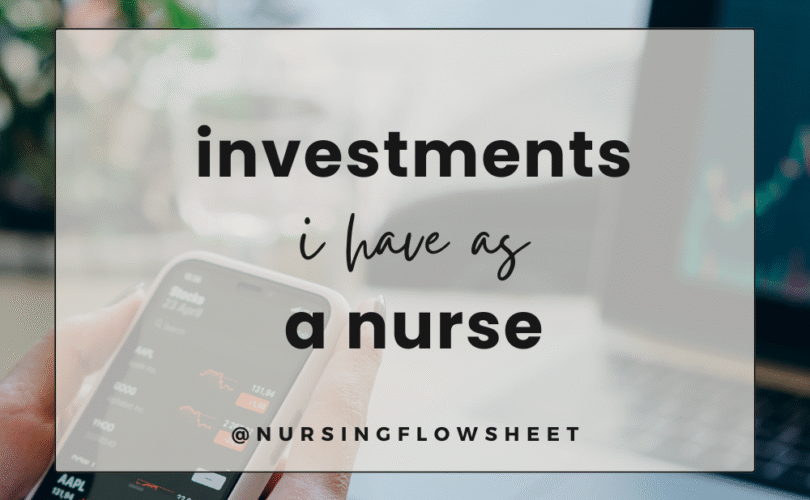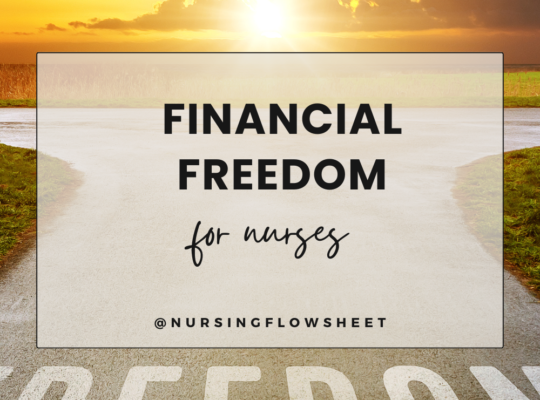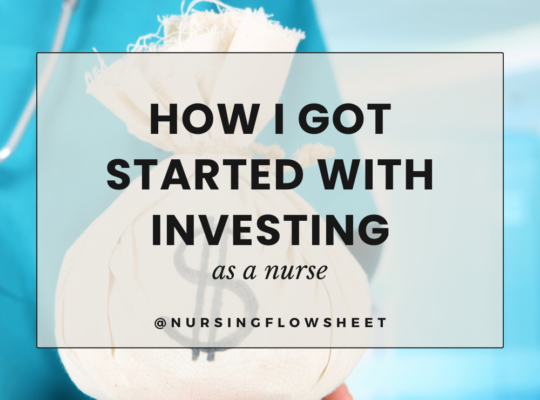Investing can feel like a daunting mountain to climb, especially for those of us in the nursing profession. Many of us grow up without a clear understanding of how to manage our finances, let alone invest. I was once among those who believed that investing was a risky endeavor reserved for the wealthy. However, I’ve since learned that investing is not just essential but also achievable, even for nurses with modest incomes. In this article, I’ll share my personal investment journey, the strategies I employ, and the various “investment buckets” I utilize to build wealth.

The Importance of Investing
Have you ever thought about what financial freedom truly means? For many, it’s the ability to live life on your own terms without the constant worry of money. I realized that simply saving wasn’t enough; I needed to invest to grow my wealth. Investing allows your money to work for you, leveraging compound interest and creating opportunities for financial independence. It’s not just about putting money away; it’s about making your money work harder over time.
My Investment Strategy: Long-Term Focus
When it comes to investing, I consider myself a long-term investor. This means that I’m not looking for quick returns or trying to hit the jackpot overnight. Instead, I focus on building wealth steadily and consistently. I automate my investments through index funds and make intentional choices that align with my financial goals. This approach allows me to take advantage of compound interest, which is the secret sauce to growing wealth over time.
Understanding my Nurse Investment Buckets
Many people are unaware of the various ways to invest. I like to refer to my different investment avenues as “buckets.” Here’s a breakdown of my investment buckets and what they entail:
1. Workplace Retirement Accounts
As a nurse, my primary retirement account is a 403(b), which is similar to a 401(k) but specifically for public sector employees. This account allows me to contribute pre-tax dollars, reducing my taxable income. Many employers offer a matching contribution, which is essentially free money. In my case, my employer matches up to 10%—a fantastic incentive to maximize contributions.
2. Roth IRA
The Roth IRA is another critical component of my investment strategy. This individual retirement account allows my investments to grow tax-free, and withdrawals in retirement are also tax-free. While there are income limits for contributions, I utilize a backdoor Roth IRA due to my income level. I primarily invest in low-cost index funds, which have proven to be reliable over the years.
Listen to my podcast episode on: How to be a Tax-Free Millionaire
3. Taxable Brokerage Account
My taxable brokerage account offers flexibility that retirement accounts do not. There are no contribution limits or penalties for early withdrawals, making it an excellent option for those looking to retire early or access their funds before traditional retirement age. However, it’s important to remember that capital gains taxes will apply when I sell investments for a profit.
If you want to learn how to invest in these accounts, I talked about stock market investing in my free on-demand class: REGISTER HERE
4. Real Estate Investments
Real estate is often touted as a solid investment, and I can attest to this. I own a rental property that generates passive income. However, real estate investing comes with its own set of challenges, including property management and maintenance. For those who prefer a hands-off approach, consider investing in Real Estate Investment Trusts (REITs) or syndications, which allow you to invest in real estate without direct ownership.
READ: Real Estate Investing for Nurses
5. Business Investments
Two years ago, I started my online business, which has been a significant investment in both my financial future and personal growth. Investing in yourself through education and entrepreneurial endeavors can yield tremendous returns. My business also allows me to open a solo 401(k), further diversifying my retirement savings.
6. Investing for My Children
I believe in investing for my children’s future without making them responsible for my financial well-being. I have set up a 529 plan to save for their education, which offers tax advantages. Additionally, I maintain a custodial account for them, ensuring they learn about money management and financial literacy from an early age.
Conclusion: Take Action and Invest in Yourself
In summary, my investment journey as a nurse has taught me the importance of diversifying my investments across various buckets. From workplace retirement accounts to real estate and business investments, each bucket plays a role in my overall financial strategy. Remember, the best investment you can make is in yourself—whether through education, skills development, or entrepreneurial ventures.
Are you ready to take control of your financial future? If you’re a nurse interested in learning more about stock market investing, I invite you to join my free class linked below. Let’s embark on this journey together and build a financially free future!
What are you investing in? Share your thoughts in the comments below, and let’s inspire each other on our financial journeys!







